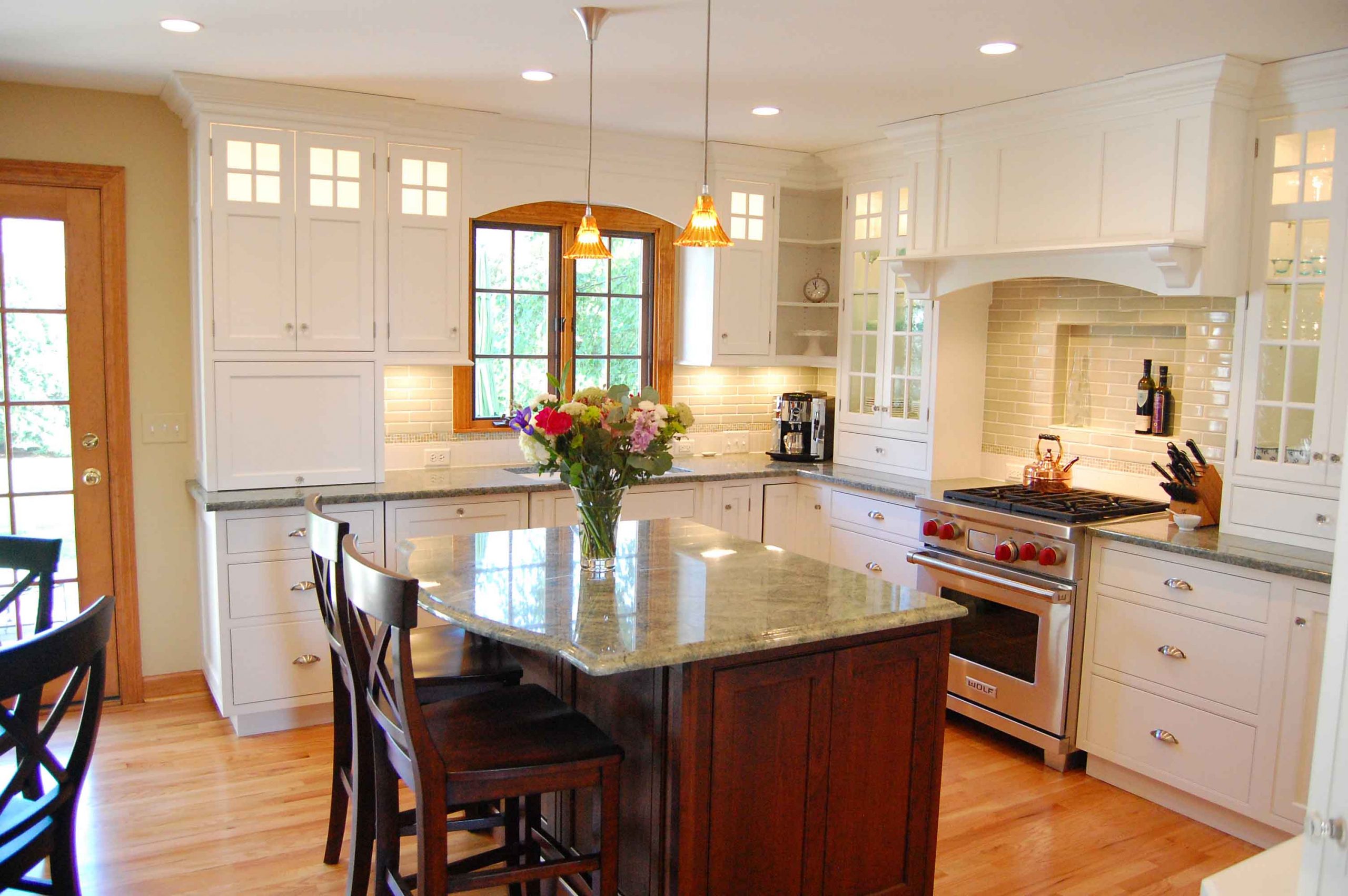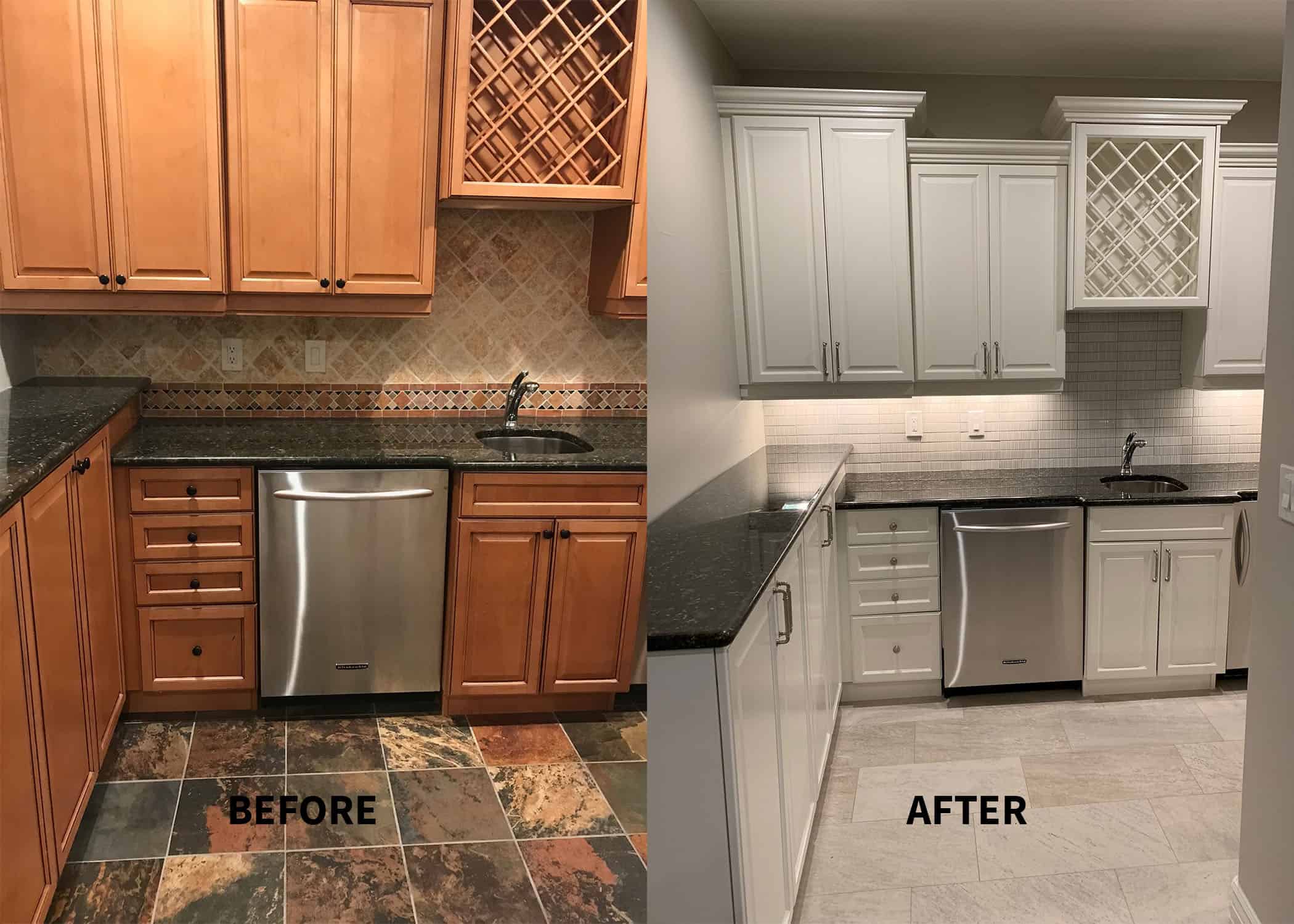The Allure of Stained and Painted Cabinets

Stained and painted cabinets offer a captivating blend of aesthetics and functionality, elevating the visual appeal of any space. Their versatility allows them to seamlessly integrate into various interior design styles, transforming kitchens and bathrooms into personalized havens.
The Spectrum of Styles and Finishes
Stained and painted cabinets present a vast array of styles and finishes, catering to diverse tastes and preferences. Stained cabinets, for instance, showcase the natural beauty of wood, highlighting its grain patterns and textures. They are available in various shades, from rich walnut to warm cherry, adding a touch of warmth and sophistication. Painted cabinets, on the other hand, offer a blank canvas for creativity. They can be painted in vibrant hues, subtle neutrals, or even adorned with decorative finishes, such as distressing or glazing, to create a unique and personalized look.
Complementary Design Themes and Ambiance
Stained and painted cabinets effortlessly complement a wide range of interior design themes, creating the desired ambiance. For a traditional kitchen, stained cabinets in rich mahogany or cherry hues evoke a timeless elegance, while painted cabinets in crisp white or cream shades create a clean and classic feel. Modern kitchens often feature sleek, painted cabinets in bold colors or metallic finishes, reflecting a contemporary aesthetic. In bathrooms, painted cabinets in soft pastel shades or calming neutrals provide a serene and spa-like atmosphere.
Enhancing Visual Appeal
Stained and painted cabinets can significantly enhance the overall visual appeal of a kitchen or bathroom. Stained cabinets, with their rich wood tones, can create a sense of warmth and intimacy, while painted cabinets can brighten up a space and make it feel more spacious. The choice of color and finish can also influence the perceived size and shape of a room. For instance, light-colored cabinets can make a small kitchen feel larger, while dark-colored cabinets can create a more intimate and cozy ambiance.
The Process of Staining and Painting Cabinets: Stained And Painted Cabinets

Transforming your kitchen or bathroom cabinets with a fresh coat of stain or paint can dramatically enhance the look and feel of your space. However, achieving a professional-looking finish requires meticulous preparation and careful application. This section delves into the essential steps involved in staining and painting cabinets, providing a comprehensive guide for achieving exceptional results.
Preparing Cabinets for Staining and Painting, Stained and painted cabinets
Thorough preparation is crucial for a successful staining or painting project. This involves cleaning, sanding, and priming the cabinet surfaces to ensure optimal adhesion and a smooth, even finish.
- Cleaning: Start by removing any dirt, grease, or grime from the cabinet surfaces. Use a mild detergent and warm water to clean the cabinets thoroughly. Ensure all surfaces are completely dry before proceeding to the next step.
- Sanding: Sanding helps to create a smooth surface and improve the adhesion of the stain or paint. Begin with a coarse-grit sandpaper (80-120 grit) to remove any imperfections or old finishes. Gradually progress to finer grits (150-220 grit) to achieve a smooth, even surface.
- Priming: Priming is essential for creating a barrier between the raw wood and the stain or paint. It helps to seal the wood, prevent the stain or paint from being absorbed unevenly, and create a smooth, uniform surface for application. Choose a primer specifically designed for the type of stain or paint you will be using.
Applying Stain and Paint to Cabinets
Applying stain and paint requires a steady hand and careful technique. Proper application is key to achieving a professional finish.
- Staining: Apply stain with a brush, rag, or sponge, working in the direction of the wood grain. Avoid over-applying stain, as it can create an uneven finish. Allow the stain to dry completely before applying a topcoat.
- Painting: Use a high-quality paintbrush or roller for applying paint to cabinets. Start with a thin, even coat, and allow it to dry completely before applying additional coats. For a smooth, professional finish, use long, even strokes and avoid overlapping wet paint.
Differences Between Oil-Based and Water-Based Stains and Paints
Oil-based and water-based stains and paints have distinct characteristics that influence their performance and application. Understanding these differences can help you choose the best option for your project.
- Oil-Based Stains and Paints: Oil-based stains and paints offer deep penetration into wood, resulting in a rich, vibrant color. They are also known for their durability and resistance to moisture and fading. However, oil-based products require a longer drying time and can emit strong fumes.
- Water-Based Stains and Paints: Water-based stains and paints are easier to clean up and dry faster than oil-based products. They are also low in VOCs (volatile organic compounds), making them a more environmentally friendly choice. However, water-based stains and paints may not penetrate wood as deeply as oil-based products, and they may not be as durable.
Creative Ideas for Stained and Painted Cabinets

The possibilities for stained and painted cabinets are endless, allowing you to express your unique style and create a truly personalized space. From classic to contemporary, there’s a combination for every taste and aesthetic. Let’s explore some creative ideas that can transform your kitchen or bathroom.
Paint and Stain Combinations
This table showcases a variety of popular paint and stain combinations, highlighting trending color palettes and finishes:
| Color Palette | Paint Color | Stain Color | Finish | —————- | ——————– | ———————- | ————— | Warm Neutrals | Creamy White | Natural Oak | Matte | Modern Minimalist | Charcoal Gray | Dark Walnut | Satin | Coastal Chic | Seafoam Green | Driftwood | Semi-Gloss | Farmhouse Charm | Dusty Blue | Weathered Gray | Distressed | Industrial Loft | Black | Espresso | High Gloss |
|---|
These are just a few examples, and you can experiment with different shades and tones to achieve your desired look. For example, a combination of a soft gray paint with a warm walnut stain can create a sophisticated and inviting ambiance, while a bold blue paint paired with a whitewashed oak stain can add a touch of contemporary flair.
Unique Cabinet Design Ideas
Incorporating staining and painting techniques can elevate your cabinet design to new heights. Here are some unique ideas:
- Distressed Finishes: Create a vintage or rustic look by distressing the paint or stain. This technique involves sanding or scraping the surface to reveal the underlying wood or paint layers, adding a touch of character and authenticity.
- Two-Tone Designs: Combine different paint colors or stains to create a striking visual contrast. For example, you can paint the cabinet doors in a bold color and leave the cabinet boxes in a neutral shade, or vice versa.
- Decorative Accents: Add decorative accents to your cabinets, such as stencils, hand-painted details, or hardware with unique finishes. This can personalize your cabinets and reflect your individual style.
Integrating Stained and Painted Cabinets
To create a cohesive kitchen or bathroom design, consider the following factors when incorporating stained and painted cabinets:
- Hardware: Choose hardware that complements the style of your cabinets and the overall design aesthetic. For example, brushed nickel hardware can work well with modern or contemporary cabinets, while oil-rubbed bronze hardware can enhance a traditional or rustic look.
- Countertops: Consider the color and material of your countertops when selecting paint and stain colors for your cabinets. For example, a white countertop might pair well with a dark stain or a bold paint color, while a darker countertop might work best with lighter shades.
- Backsplashes: The backsplash can tie together the entire kitchen or bathroom design. Choose a backsplash that complements the colors and finishes of your cabinets and countertops.
Remember, the key to a successful design is to create a harmonious balance between different elements. Consider the overall style of your home and your personal preferences when making decisions about paint and stain colors, hardware, and other design details.
Stained and painted cabinets offer a timeless elegance, but even the most durable finishes can succumb to wear and tear. If your vinyl-covered kitchen cabinet doors are showing signs of damage, don’t despair! You can often breathe new life into them with a little TLC.
This guide on repairing vinyl-covered kitchen cabinet doors offers valuable tips and techniques to restore your cabinets to their former glory. With a little effort, you can enjoy the beauty of your stained and painted cabinets for years to come.
The choice between stained and painted cabinets often comes down to personal preference, but it’s important to consider the overall ambiance you’re aiming for. For a bedroom, especially if you’re looking to create a cozy and intimate atmosphere, you might want to explore alternative lighting options to overhead fixtures.
This guide offers some inspiring ideas for achieving that warm and inviting glow. The subtle interplay of light and shadow can beautifully highlight the natural grain of stained cabinets, while painted cabinets offer a clean and modern canvas for accent lighting.
